Ap Music Theory Flashcards
1/110
There's no tags or description
Looks like no tags are added yet.
Name | Mastery | Learn | Test | Matching | Spaced |
|---|
No study sessions yet.
111 Terms
Simple Meter
2/4, 3/4, and 4/4 time signatures that divide each beat into two equal parts, typically indicating a strong downbeat followed by a weaker upbeat.
Compound Meter
Time signatures like 6/8, 9/8, and 12/8 divide each beat into three equal parts, creating a distinct rhythmic feel compared to simple meter.
Harmonic Minor
Raises the seventh note of the natural minor scale by a half step, creating a leading tone.
Natural Minor
W-H-W-W-H-W-W.
Melodic Minor
Raises sixth and seventh notes of the natural minor scale when ascending, and descends like the natural minor scale.
Complex Meter
A time signature that features irregular beats and may involve patterns of grouping beats in different ways, often found in contemporary and world music.
Simple Quadruple
A meter that has four beats per measure, typically organized into a regular pattern of strong and weak beats, such as 4/4 time.
Compound Quadruple
A meter that has four beats per measure but features subdivisions of each beat into three, often organized in a pattern such as 12/8 time.
Compound Intervals
2 octave = 15ma
Inversions for Triads
1st inversion: 5/3
2nd inversion: 6
3rd inversion: 6/4
Inversions for 7th Chords
1st inversion: 7/5
2nd inversion: 6/5
3rd inversion: 4/3
4th inversion: 4/2
Dissonant
2 notes that make ugly sounds.
M2, m2, Tritone, M7, m7
Consonant
Good, acceptable sounds. Ex) octave, perfect fifth, and major/minor thirds.
Qualities(half steps
1 hs = m2
2 hs = M2
3 hs = m3
4 hs = M3
5 hs = P4
6 hs = Tritone
7 hs = P5
8 hs = m6
9 hs = M6
10 hs = m7
11 hs = M7
12 hs = P8
Whole Tone Scale
All whole step, only 2 possible scales: C wt & C# wt
Pentatonic Scale
5 notes: 12356
Chromatic Scale
All half steps
Timbre
Tonr “color” or sound quality
Fundamental hz(base hz)
Examples:
Similar Timbre: String orchestra; woodwinds; choir; brass; piano solo.
Contrasting Timbre: Rock band; Percussion section; Marching Band; Choir + Piano; Vox + Cymbols
Relative Keys
Major and minor keys that share the same key signature
Ex) C major - A minor
E♭ Major - C Minor (3 flat)
Closely Related Keys
Keys that differ by one sharp or flat in their key signatures
For C major:
A Minor (relative)
G Major (one sharp)
F Major (one flat)
E Minor (relative of G)
D Minor (relative of F)
C Minor (parallel minor)
Distantly Related Keys
Keys that differ by more than one accidental and are not in the circle of 5ths neighborhood.
Ex) C Major - F♯ Major (6 sharps)
C Major - A♭ Minor (7 flats)
Parallel Keys
Keys with the same tonic note, but different mode (major/minor).
Ex) C major - C minor
Transposing Instruments
Instruments that sound different pitch than written. Their sheet music is written in a different key so they can play the same fingerings in every key.
Ex) Horn in F: Written-C, Hearing-F.
Interval from written to sounding: down a Perfect 5th
Irregular Division
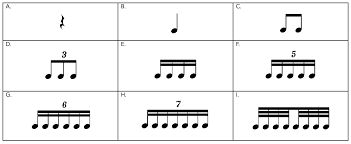
Hemiola
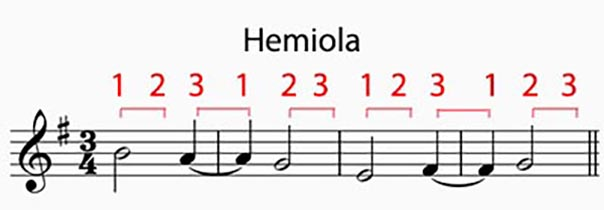
Asymmetrical Meter
Complex Meters: 5/4 13/8
Syncopation
Emphasizes the off beat

Mixed Meter
Meter changes throughout the piece

Cross Rhythm/Polyrhythm
playing ¾ in a 4/4 meter
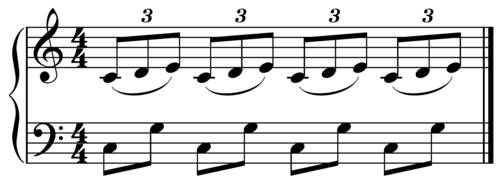
Agogic Accent
One note longer than the notes around it.

Anacrusis
Bass Clef line. Could also be 1 measure of one beat pickup the next phrase.

Fermata
A note that holds longer than its normal duration.
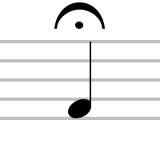
Borrowed Division(Tuplet)
Triplet used in simple or duple division
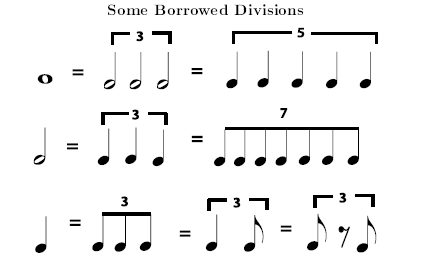
Symmetrical Meter
Notes & Meter are the same size
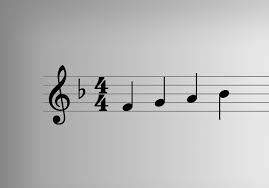
Texture
The way musical lines are layered
Monophonic
Music with only one melody - all voices unison.
Ex) everyone singing Happy Birthday Song in unison
Heterophonic
Unison music where one line has slight variation.
Hetero = Different. Phonic = Sound
Ex) Everyone singing Happy Birthday Song, one voice sings it lil extra.
Homophonic
One main melody, other parts harmonize and support melody.
Ex) Solo singing the melody while the rest of the choir harmonize.
Polyphonic
Two or more equally important melodies.
Alberti Bass
(typically piano) A broken chord played in the left hand.
Walking Bass
(typically jazz) a bass line that walk from chord tone to chord tone with scales and apreggios(you play the notes of a chord one at a time)
Canon(polyphony device)
A melody played in staggered entrances. Each group is identical but at different time.
Imitative Polyphony
Independent musical melodies that imitate each other.
Melodic Features
Range: highest note to the lowest
Tessitura: average range of a song or melody
Contour: Overall shape of a melody or phrase
Text Setting(vocal music):
Syllabic: each lyric one note
Melismatic: one lyric multiple note
Motive: a musical idea or segment that comes back repeatedly.
Anatomy of a Triad
Diminished: m3+m3
Minor: m3+M3
Major: M3+m3
Augumented: M3+M3
Roman Numeral for Major
I ii iii IV V vi viio
Roman Numeral for Natural Minor
i iio III iv V VI VII or viio
Anatomy of a 7th chord
Major 7: M3+m3+M3
Major-Minor(dominant 7): M3+m3+m3
Minor 7: m3+M3+m3
Hald Diminished 7: m3+m3+M3
Diminished 7: m3+m3+m3
Voice
A single melodic or harmonic line
Static Motion
Both no change
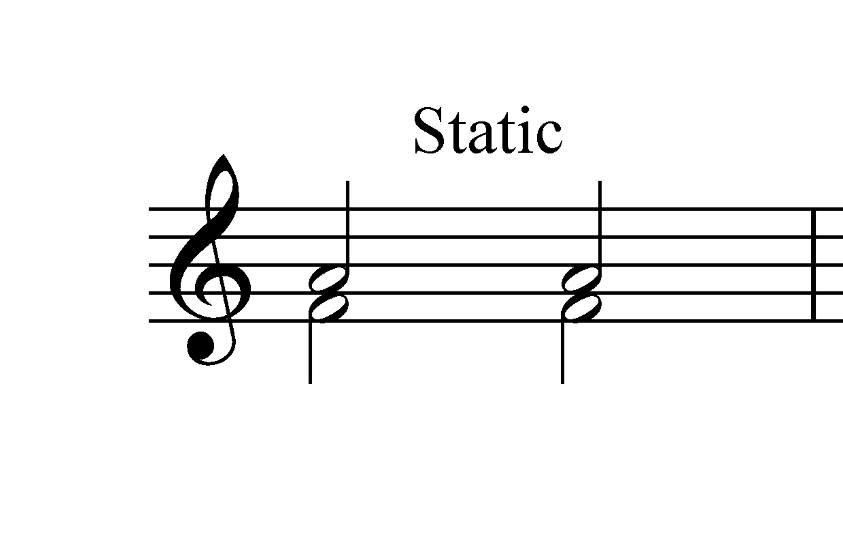
Oblique Motion
One no change, the other moves.
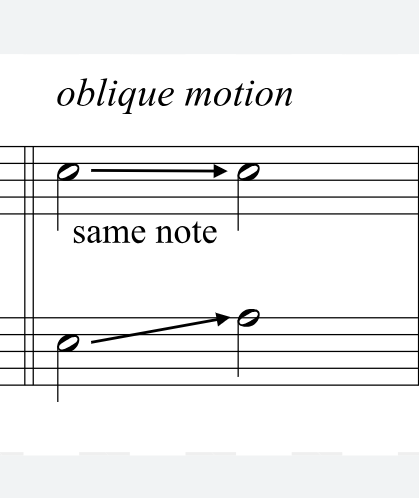
Contrary Motion
Both move opposite way(same interval)

Parallel Motion
Same way same interval

Similar Motion
Same way different interval
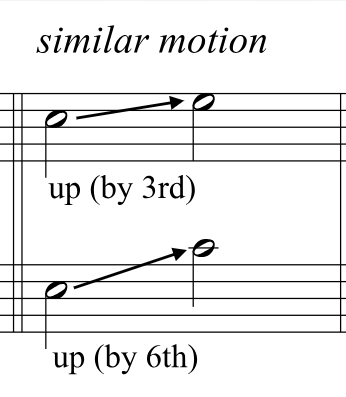
Rules for Voice Leading
Every note fit in the chord
Every note should try to move to the closet note
Chord spelled completely, may left out the 5th in root position
No voice crossing(EX soprano lower than alto note)
No parallel 8ves or parallel 5th
No augumented/diminished intervals
Leading tone in S & B must resolve up to tonic.
Never double the leading tone.
Rangel’s Steps for Sucessful Part Writing w/JOY
Build a snowman
write bass note
keep any common tones
resolve LT(can frustrate LT is in alto or tenor)
Move all voices as little as possible(SAT)
Voice Leading 7th Chords
Inverted 7th must be complete
Root position 7th chords may leave out 5th if needed
7th of a chord resolves down
Do not double the 7th of a chord
Cadence
A chord progression that signifies the end of a phrase
Authentic Cadence
V→I or V→i
Perfect(PAC): Root position for both chord, soprano ends on tonic
Imperfect(IAC): Not a PAC but V-I/i
Deceptive Cadence
V→vi or V→VI
Hald Cadence+Phrygian Half Cadence
Ends on V
*Phrygian Half Cadence in minor key only iv6→V
Plagal Cadence(Amen Cadence)
IV→I or iv→i
Picardy Third
Ending a piece(in minor) with a surprising Major I
Passing 6/4
Bass note steps to 6/4 chord and then continue with another step in the same direction
I→V6/4→I6
Pedal 6/4
Bass note is the same in the chords before and after the 6/4
Most common: I→IV6/4→I & V→I6/4→V
Cadential
Happens on a strong beat
I6/4 resolves down
Dominant Function
Always: I6/4→V→I(or in minor ver.)
Arpeggiated 6/4
Harmony before and after stays the same, bass note arpeggiated within the chord
Arpeggiated = bass note bounced around.
Ex) I→I6/4→I
Voice Leading 6/4 Chords
All 6/4 chords:
voices move only by step
double the bass note of the 6/4 chord(5th)
Cadential 6/4 only:
I6/4 resolve down by step
don’t really need to voice leading arpeggiated 6/4
Guidelines for Harmonization
Write all Roman Numerals & spellings
Write Roman Numerals for the cadence
Work backwards from cadences
Use mostly I and V(maybe ii or IV)
Fill in bass line, check parallels.
Passing Tone
Approached by step
Resolved by step in same direction
Accented + Unaccented

Neighbor Tone
Approached by step
Resolved by step in opposite direction
Accented + Unaccented
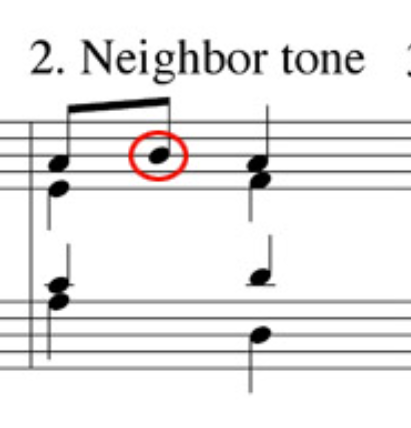
Cambiata/Neighbor Group(Changing Tones)
Approached by step
Resolved by step
Unaccented

Anticipation
Either by step or leap
Resolved in same note
Unaccented
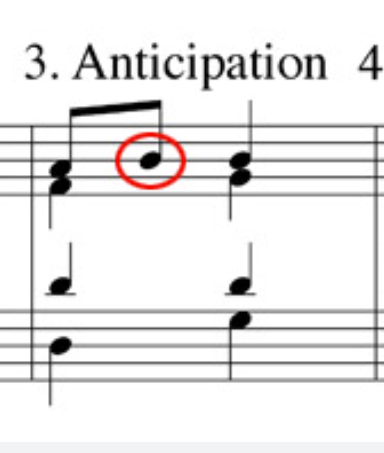
Escape Tone
Approached by step
Resolved by leap in opposite direction
Unaccented
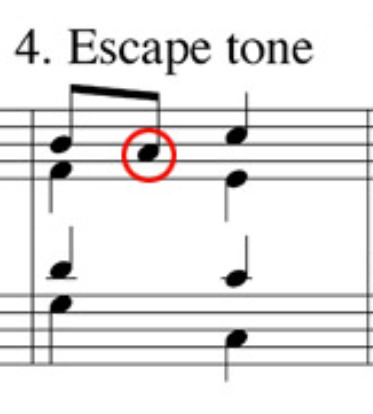
Appogiatura
Approached by leap
Resolved by step in opposite direction
Accented
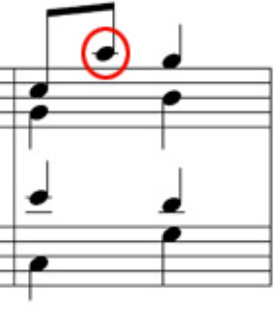
Pedal
Approached by same note
Resolved by same note
Neither Accented or Unaccented. Always there.

Suspension
Approached by same note
Resolved by a step down
Accented
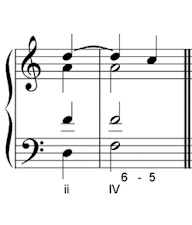
Retardation
Approached by same note
Resolved by a step up
Accented + Unaccented
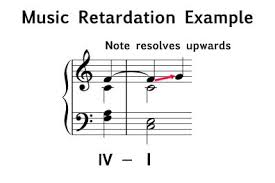
Figured Bass for Suspensions
sus 7-6: bass=c soprano=b→a(7th→6th)
sus 4-3: bass=c soprano=f→e(4th→3rd)
Development
How a motive is alterned via repetition
Literal Repetition
Exact same note
Fragmentation
Repeating part of the motive
Sequential Repetition
Motive is transposed with each repetition
Augmentation
All notes values get longer(slower)
Dimination
All note values get shorter(faster)
Inversion
Motive is played backwards(notes)
Retrograde
Melody is played backwards(rhythm)
Rhythmic Retrograde
Rhythmic values are reversed but pitches stay the same
Sequence
Interval of transposition: the interval by which motive is transpose within a sequence; usually stays constant within sequence
Secondary Function
Dominant chord of another chord within the key.
Ex) In C Major, a V/ii will be the dominant of d minor chord→A major(not a minor 6 in C major)
always V/something EXCEPT NO V/viio
Secondary Leading Tone Chords
It’s chromatic(outside of the key signature # ♮ b)
It’s major triad(Mm) or major-minor7(MnM)
In C Major: viio/ii is the 7th of a d-minor→c#o
One half step down from the next chord
Magical Music Modes
I
Don’t
Play
Loud
Music
At
Lunch
Ionion
Do-Do
Major Scale
Dorian
Re-Re
Minor with raised 6
Phrygian
Mi-Mi
Minor with flat 2
Lydian
Fa-Fa
Major with #4 “Fi”
Mixolydian
So-So
Major Scale with flat 7 “Te”
Aeolian
La-La
Natural Minor
Locrian
Ti-Ti
Diminished Scale
Similar to Phrygian
Phrase Relationships
aabb abab abcd aa’aa’’
a=original phrase
a’=variation of phrase a
a’’=variation of phrase a but different from a’
bcd=contrasting phrase